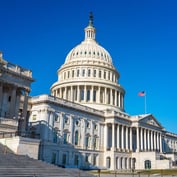What You Need to Know
- In a recent survey, a third of people earning more than $250,000 a year reported living paycheck to paycheck.
- This group carries a heavy load of student debt that is unlikely to be forgiven.
- Rising home prices are likely adding to the feeling of overextension.
How much does it take to feel flush in the U.S. these days? Not even $250,000 a year will get you there, according to a recent survey by Pymnts.com and LendingClub Corp., which found that 36% of those earning at least that amount say they’re living paycheck to paycheck.
Considering $250,000 is almost four times the median US salary and puts you in the top 5% of earners, it’s pretty unnerving that so many say they are spending everything they make each month. (And this was a census-balanced survey; they didn’t just ask people in high-cost areas such as New York and San Francisco.)
It’s even more disconcerting when you realize that most in that category haven’t had to make student loan payments for more than two years. Almost everyone has been taking advantage of the moratorium on federal student loans, which allows borrowers to press the pause button on payments without any interest accruing.
Student loan debt is a big deal for many in this crowd. More than 32% of total federal student loan debt is held by households with incomes from about $107,000 to $374,000, the largest percentage of any income group, according to the Education Data Initiative. The average amount of student debt within that group is $45,965 — also the highest for any income bracket.
For those with professional or doctorate degrees, which are common among top earners, the debt burden is often much higher. Student loans for MBAs total more than $66,000, while law school is more than $145,000 and medical school is north of $201,000. Assuming even just the average of $82,800 in total student debt for a graduate school borrower means monthly payments of about $950 a month have been on hold for almost 30 months.
When those payments will start coming due again is anyone’s guess. The Biden administration extended the moratorium in April until Aug. 31. The president is reportedly considering canceling up to $10,000 of debt per borrower, but potentially limiting it to those who earn less than $150,000 (or $300,000 for married couples).
It’s unlikely that those earning $250,000 or more will see any substantial forgiveness, which means their budgets are going to become even more stretched. According to the Pymnts.com survey, more than 12% of those earning at least $250,000 say not only are they living paycheck to paycheck, but they’re unable to pay some of their bills.
One key detail: For the 24% that said they’re living paycheck to paycheck but are still able to pay all their bills, the “bills” they’re paying include savings that come out of their check automatically each month for things like retirement and college plans.









 June 08, 2022 at 02:31 PM
June 08, 2022 at 02:31 PM











